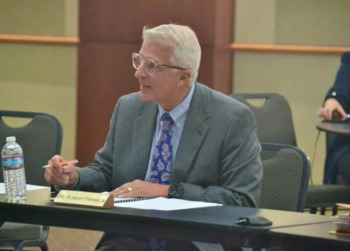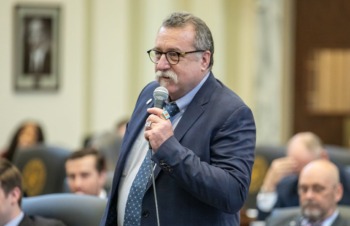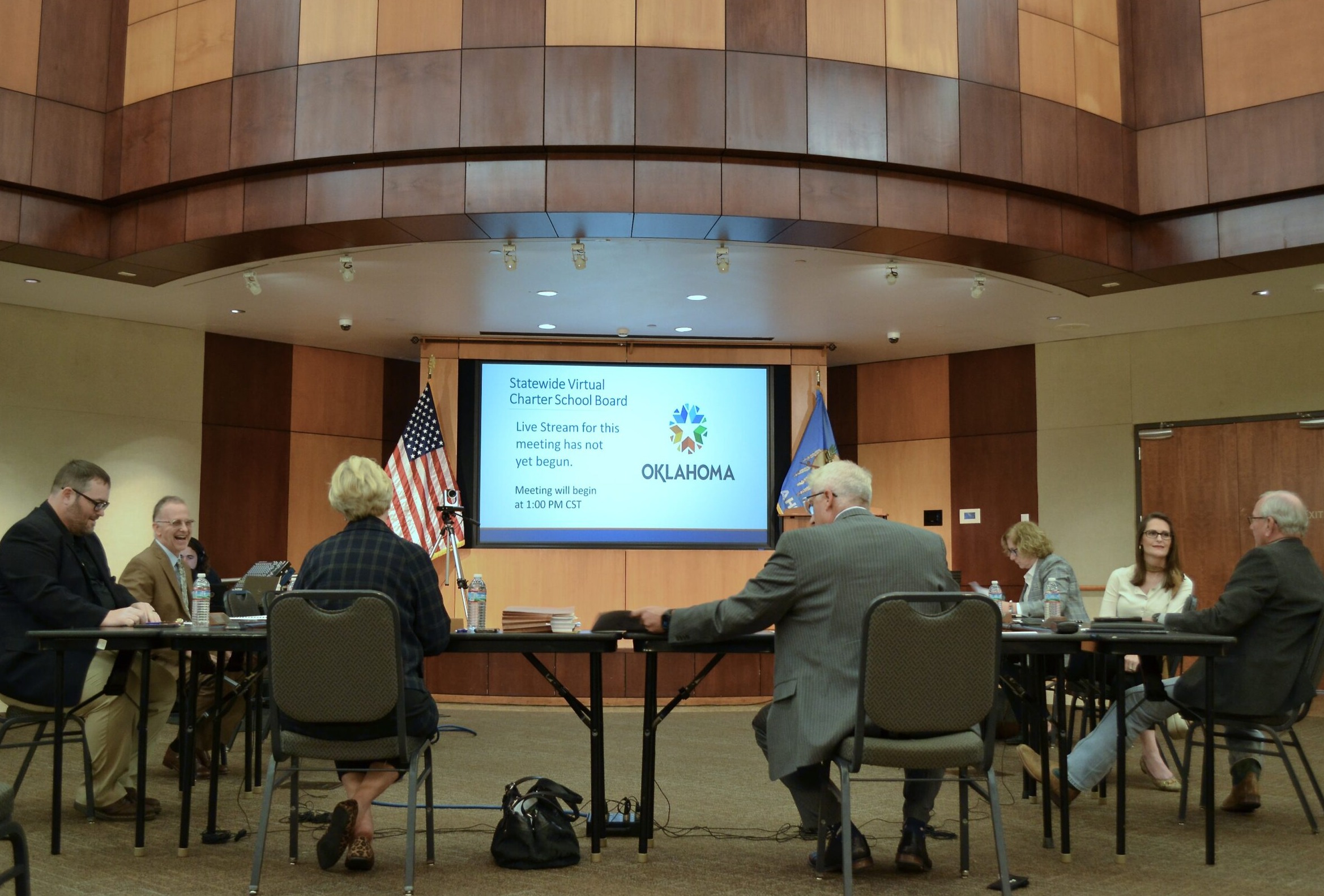
BearFotos/Shutterstock
Seven virtual charter schools are currently operating in the state, and an eighth has been approved to open later this year.
OKLAHOMA CITY — When Zari Bigelow started looking into virtual charter schools for her son, only two options existed.
Twelve years later, Bigelow’s son, Ashton, 18, is now about to graduate from one of those schools and go to college, having spent his entire K-12 experience in public virtual education.
Her son was lucky that Oklahoma Virtual Charter Academy was the right school for him, she said. The Broken Arrow family tried a year with Epic Charter School, but Bigelow said it wasn’t as good of a fit.
“If we didn’t have any other options,” Bigelow said, “I don’t think Ashton would have been as successful as he is right now.”
That’s why Bigelow said she’s been happy to see more virtual charter schools opening in Oklahoma, giving parents today more choices.
Seven virtual charter schools are currently operating in the state, and an eighth has been approved to open later this year.
How many virtual schools are too many?
But as the number of virtual schools continues to climb and as even more apply for authorization, state officials have started to question how many more of these niche schools Oklahoma needs.

Nuria Martinez-Keel/Oklahoma Voice
Robert Franklin, chairperson of the Oklahoma Statewide Virtual Charter School Board.
The state could surpass a “saturation point” if officials aren’t careful, said Robert Franklin, chairperson of the Oklahoma Statewide Virtual Charter School Board. The board is responsible for authorizing and overseeing all virtual charter schools in the state.
The thought crossed Franklin’s mind as the board considered two recent applications for new schools. The board rejected both proposals in a March 11 meeting over concerns neither had a fully developed plan for operations and finances.
Franklin said he’s unsure where the saturation point is, but a sign that Oklahoma has exceeded it could be the day when virtual enrollment reaches its natural limit and students move between schools based on which has the better marketing campaign.
“I don’t think that’s healthy,” Franklin said.
Virtual school students score below average in 2023 state testing

Courtesy of Oklahoma State Government
Rep. Mark McBride, R-Moore, speaking to the Okla. House of Representatives in Dec. 2023.
Rep. Mark McBride, R-Moore, said these schools should produce better academic results before the state considers opening more.
Each of Oklahoma’s virtual charter school systems that participated in state reading, math and science tests in spring 2023 scored below the state average for districtwide results, state data shows.
McBride, who leads a House subcommittee on education funding, said there are reasons to have virtual charter schools, but right now “they’re not doing the job they should be doing.”
“It raises doubts,” he said. “I would like to see these academic scores come up before we entertain this any further.”
Advocates say state should not limit options
School choice advocates, though, say the state shouldn’t put limits on the virtual options available to families.
There could be a ceiling to how many students will seek out this type of education, but that doesn’t mean officials should curb the number of virtual charter schools, said Barry Schmelzenbach, executive director of the Oklahoma Public Charter School Association.
Some schools might keep their enrollment low to maintain highly specialized services, meaning there could be room for more online programs, Schmelzenbach said. Oklahoma hasn’t “come anywhere near where that saturation point would be,” he said.
Most virtual charter schools set capacity limits, but they have flexibility to adjust and admit more students during the school year.
Epic is the largest school by a wide margin with 27,000 students. All other virtual charter schools in the state have fewer than 3,500 children enrolled.
About 5% of Oklahoma’s 700,000 public school students are enrolled in a virtual charter school, according to 2024 enrollment figures from the Oklahoma State Department of Education.
That exceeds the national rate.
Nation-wide 1% of students enrolled in virtual schools
Only 1% of American public school students were enrolled in a virtual school in the 2021-22 school year, the most recent year of data available from the National Center for Education Statistics.
That data includes the hundreds of thousands of students who temporarily flocked to virtual schools during the COVID-19 pandemic. Those numbers have since declined in Oklahoma, as students returned to their brick-and-mortar schools.
“The multiplicity of options is what’s going to help kids the most.”
Brett Farley, board of directors
St. Isidore of Seville Catholic
Virtual School
Only 36 states had virtual schools as of 2021-22. Among them, Oklahoma had the sixth highest virtual school enrollment, leading other states that had dozens more online options to choose from, according to data compiled by the National Education Policy Center at the University of Colorado-Boulder.
Bigelow said she thinks the demand for virtual learning will grow now that more families tried it during the pandemic.
“I think more and more and more parents are seeing the positive things that (come from) a situation where you have full control on how your child is being treated and how they’re being taught,” she said. “And I think more and more people are going to be looking into that. And so we need more schools so they’re able to actually do that.”
However, Franklin, of the Statewide Virtual Charter School Board, said he doubts online enrollment is going to get close to the pandemic peak any time soon.
After rapidly becoming the largest school district in the state in 2020, Epic lost tens of thousands of students over the following years. State data shows it’s still seeing a decline, with a 5% decrease this year compared to its 2022-23 student count.
Despite that, Epic remains the third largest school district in Oklahoma.
Unlike Epic, most of the seven virtual charter schools saw growth this school year, and none more so than Insight School of Oklahoma. The alternative education school serving 1,100 students at risk of not graduating grew its enrollment by 19% this school year and by 35% the year before, state data shows.
[Related: Every school a community school. Every community a learning community.]
Executive Director Jennifer Wilkinson said Insight School would support further efforts to expand educational choice in the state.
“Many families have found success for their students in a virtual school, and many more would like to consider the option,” Wilkinson said in a statement to Oklahoma Voice. “Insight School of Oklahoma meets a unique need in the market, as evidenced by our continued growth.”
Nation’s first religious charter school opening in Oklahoma

Nuria Martinez-Keel/Oklahoma Voice
The Oklahoma Statewide Virtual Charter School Board meets Oct. 9, 2023, to consider a charter contract for St. Isidore of Seville Catholic Charter School.
Another virtual charter school yet to open could demonstrate a growing interest in online education.
As it prepares for its inaugural school year in August 2024, St. Isidore of Seville Catholic Virtual School expects most of its future students are attending brick-and-mortar schools right now, said Brett Farley, a member of the school’s board of directors.
St. Isidore would be the nation’s first religious charter school. Multiple lawsuits are challenging its existence, but without a court order blocking it, St. Isidore is preparing to open next school year with a maximum of 500 students in year one.
Farley said the school could attract Catholic families who live in areas where a parish school isn’t available and students whose learning styles could be better served in a virtual environment rather than traditional, in-person schooling.
[Update: Oklahoma Supreme Court strikes down Catholic charter school]
Students of all backgrounds and faiths can attend St. Isidore, but its unique characteristics mean it appeals to a niche audience that would stick with the school even if more virtual charter options open in the state, he said.
The Archdiocese of Oklahoma City and the Diocese of Tulsa are supportive of the state adding more virtual schools.
“The multiplicity of options is what’s going to help kids the most,” Farley said.
***
Nuria Martinez-Keel is an Oklahoma-based journalist. She reports on k-12, higher education and the courts for the Oklahoma Voice.
Oklahoma Voice is part of States Newsroom, a nonprofit news network supported by grants and a coalition of donors as a 501c(3) public charity. Oklahoma Voice maintains editorial independence.



























